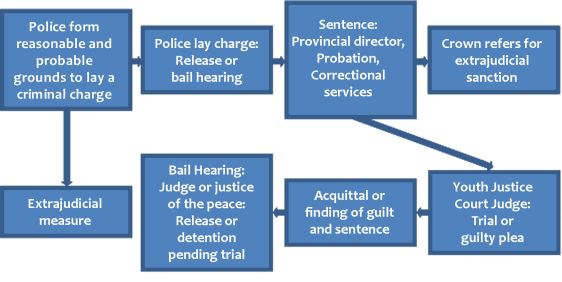Overview of the Youth Justice System
The Youth Criminal Justice Act (YCJA) is the federal legislation that replaced the Young Offenders Act (YOA) on April 1, 2003. This act modifies the Criminal Code of Canada for youth offenders, those between 12 and 18 years of age. The YCJA was introduced because too many youths were being sent to court and placed in custody under the YOA for minor offences that can be better dealt with outside courts.
The YCJA emphasises these principles:
- Timely intervention
- Meaningful consequences
- Repairing harm done
- Involvement of family and community, and
- Respect for victims
Extrajudicial Measures
Police are encouraged to use extrajudicial measures (known as alternate measures under YOA) which are considered adequate for first-time, non-violent offences. These measures are often designed with community and victim involvement.
Conferences
Under the YCJA, conferences may be held to advise on appropriate extrajudicial measures, conditions for judicial interim release, sentences, including the review of sentences, and reintegration plans. Conferences involve meetings between offenders, victims, and community members. These conferences typically have an emphasis on restorative justice and providing compensation to victims for injury caused by offenders.
Laying Charges
If police decide that extrajudicial measures are inappropriate and that charges should be laid, the youth may be referred to the Crown. The Crown may refer the youth for extrajudicial sanction, where all reasonable alternatives to Court proceedings will be considered. If charges are approved and court proceedings end with a guilty plea or conviction, the youth will be sentenced by a youth justice court judge.
Sentencing
Judges must look at alternatives to custody when sentencing youth and must pay particular attention to the circumstances of Aboriginal young persons. Sentences should involve the community, be appropriate to offender’s level of involvement and responsibility for the crime and the seriousness of the act. Placing a youth offender in custody may be necessary in cases of serious, violent crimes or where an offender has not complied with non-custodial sentencing in the past. Serious offences may be raised to adult court.

For more information, visit the Justice Education Society of BC.
